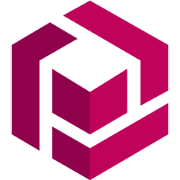Our Software Modernization Service: Proven Applications on the Latest State of Technology
Despite the fact that everybody loves talking about the hottest new technologies, when you look at what companies are actually using, it is usually a different story: the majority of enterprise-critical solutions still consist of legacy applications and databases. fecher is an expert in reliably porting these typical LOB (Line of Business) applications to new platforms. fecher moves your Visual Basic 6 or Gupta applications to modern .NET architectures. Our experts will transform your WinForms applications written in C# or VB.NET into browser applications for web, mobile and/or cloud use. Your legacy database solutions can also be transformed into a state-of-the-art application.
Are you interested in our Software Modernization Service? Order your Free Analysis now!
Legacy Modernization: Efficient and Future-proof

VB6 Migration
Automated translation of VB6 source code to a modern and future-proof .NET environment.
Learn more
Gupta Porting
The tool-based service offers automated porting of the SAL code - also to the web.
Learn more
Web Enabling
Turnkey migration of existing application code to a real-time web application platform.
Learn more
All Services
Customized solutions for your requirements - benefit from our expertise in diverse industries.
Explore our servicesAt a Glance: Why Should Legacy Applications Be Modernized?
In the 1990s, desktop application development tools such as Visual Basic, Access, and Gupta were the application development stars. They are, however, outdated since browser technologies and modern platforms such as Microsoft's .NET framework offer so much more.
Consequently, many people are now trying to figure out how their legacy applications can be made ready for the future. It is crazy to continue modernizing these legacy applications under the old environment. Yet, redevelopment is expensive and risky.
What Solution do we Offer?
fecher offers a very sensible "third" alternative: Our Legacy Application Modernization Service. We apply a proven procedure model and utilize specialized software tools to migrate your legacy applications to .NET. The deliverable our clients receive is a real .NET application that conforms to modern architecture and display standards.
Access from Anywhere
Our clients also have the option of choosing to web-enable their WinForms application or migrate their WPF application to the web during the migration project, so that the new application will also work from within a browser and on mobile devices. There are three areas to consider: Firstly, the programming environment (programming language or 4GL) that determines the design and further development of the application logic and often the front-end logic, as well. Secondly, the database often also contains important application code components, such as stored procedures and triggers. Thirdly and finally, the reports, which are often the most important output an application generates.

Everything from a Single Source
fecher works with highly specialized tools that enable it to migrate application code, masks, databases and reports from old platforms to modern technologies. A platform switch, however, nearly always also requires at least partial redevelopment, which fecher carries out as a "nearshoring" project.
What factors determine the cost of a legacy modernization project? How can we estimate it?
The cost of a legacy modernization project depends on various factors, including the complexity of the existing software, the amount of code to be migrated, the target platform and any additional features or compliance requirements. Our team always conducts a free initial analysis to assess these factors and provide a tailored, fixed-price offer. This approach informs our clients of the expected costs upfront, allowing for better budgeting and planning.
We analyze your existing applications at no cost and develop a tailored proposal for your modernization project, including a detailed cost estimate.
Your Software Modernization Service with a Proven Procedure Model
Although we can make it easier, a conversion does not happen by simply pressing a button. fecher conducts its migration projects in accordance with a proven procedure model that allows for various levels of service. Projects are normally implemented at the "all-inclusive" level, where we deliver a "turn-key" application at the end of the project. Clients, however, may also decide on an in-house project where they bring in their own development resources and thus the cost – which is already low in comparison to redevelopment – is lowered even further. To ensure everything runs smoothly, fecher's migration experts will train your in-house developers beforehand. It goes without saying that our experts remain available for coaching at all times during the project.
- Information
- First and Free Analysis
- Detailed analysis with a fixed price offer
- Project setup and partitioning
- Code generation and completion
- Code finalization
- Test phase
- Training
- Further development
In all cases, the migration takes place in several phases: During the evaluation phase, fecher develops with its potential clients a solid decision-making basis for the application's migration. This also includes a fixed-priced offer that corresponds to the quantity and complexity of the code. Thereafter, the project itself starts with the implementation phase. The automated source-code translation into the agreed target language is supplemented by the structured execution of the tasks listed in the analysis. Finally, extensive tests ensure that the ported application is fully executable in the defined local, cloud, web and / or mobile environments.
It's the Tool That Makes the Difference
In performing the migration, fecher uses tools it has developed further by applying its experience with hundreds of successful porting projects and which make it possible to automate the process to a meaningful extent. Depending on the migration project's source environment, the front-end, program logic, reports and the database including table definitions, accompanying logic (triggers, stored procedures) and all user data are migrated to the new environment.
Corresponding tools that automatically analyze the source code are also used to generate the cost estimates. In order to find out just how soon your application could be up and running in a browser environment, you generally do not even have to send us your code. Request a Free Analysis today and receive a customized migration offer within just a few days!
Migration Paths
| from/to | .NET Winform Client/Server | Browser Application | Azure, mobile | Programming Language C# | Programming Language VB.NET |
|---|---|---|---|---|---|
| Gupta | X | X | X | X | X |
| VB6 | X | X | X | X | X |
| .NET Winform | X | X | Retained | Retained | |
| Access | X | X | X | X | |
| ASP.NET | Real-time web app | X | Retained | Retained |
In Addition:
- Database Migration: OpenText / Gupta SQLBase and IBM Informix to SQL Server or SQL Database, Oracle; database middle layer for the SQL translation
- Report template migration to Reporting Services, Crystal Reports, List & Label, Stimulsoft
- Architecture consulting and training / coaching within the scope of a Modernization Project (.NET, Wisej.NET, Microsoft Azure)
- Flexible procedure model with project variants from do-it-yourself to all-inclusive
- Free Analysis with an extensive presentation of the costs, time frame and course of action
Modernizing Legacy Systems with fecher in Comparison to Other Approaches
A Strategic Alternative to Traditional Software Renewals
Redeveloping or rebuilding software preserves more of the existing system compared to a complete rewrite, focusing on adapting and enhancing rather than starting from scratch. Replacing an application with an entirely new product, on the other hand, can be a significant step, often reserved for cases where the current software no longer meets critical needs. All these approaches represent substantial investments and carry risks.
What are the Benefits of Modernizing Rather Than Completely Rewriting or Replacing Legacy Software?
Our Software Modernization Service emphasizes transitioning existing software to a modern environment, such as upgrading legacy systems to .NET, enabling web access, and modernizing interfaces – all without complete rewriting. This approach offers clear advantages, particularly in terms of cost-efficiency, reduced risk, and faster implementation.
Cost-Effectiveness
Legacy software modernization is generally a less expensive solution than rebuilding or rewriting from scratch since it leverages much of the existing codebase and functionality, requiring fewer development resources.
Lower Risk
Because modernizing legacy software keeps most of the original software intact, there is less risk of introducing significant bugs or disruptions to core functionality. It allows for incremental updates and minimizes the impact on end-users.
Faster Time-to-Market
Modernization is usually faster, as it doesn’t involve building new software from scratch. This means you can quickly benefit from updated technology without a lengthy development period.
Data Integrity and Continuity
The approach of migrating helps maintain data continuity by transferring existing databases and settings to a new platform without requiring major data restructuring, reducing the risk of data loss.
Valuable Bonus – User Familiarity
Since the core application doesn’t undergo a complete re-do, users / customers don’t have to relearn the system, which can ease and improve the transition and minimize custom training needs.
Refactoring and Modernization: A Closer Look
Refactoring focuses on improving an application's internal structure without altering its behavior. This technique enhances code readability, reduces complexity, and improves maintainability, making future development and debugging easier. Common benefits include better performance, simpler maintenance, and increased scalability. Refactoring is typically recommended when code quality declines, new features are added, or bugs need fixing.
While refactoring focuses on improving existing code, fecher's Software Modernization Services aim to take this a step further by migrating legacy applications to modern platforms, transforming outdated software architectures, and ensuring future scalability, security, and integration with modern technologies. Refactoring and modernization are not strict opposites; in many cases, refactoring can still be an essential part of modernization, especially when transitioning systems to web-based environments. This ensures that the modernized system is not only updated to new technologies but also optimized for better performance and improved in regards to maintainability.
Key Differences
Modernization:
- Overhauls outdated systems.
- Migrates to new platforms or technologies, including the web.
- Often includes refactoring to optimize the transition.
- Ensures long-term scalability and future-proofing.
Refactoring:
- Improves internal code structure.
- Retains existing functionality.
- Enhances code maintainability and performance.

